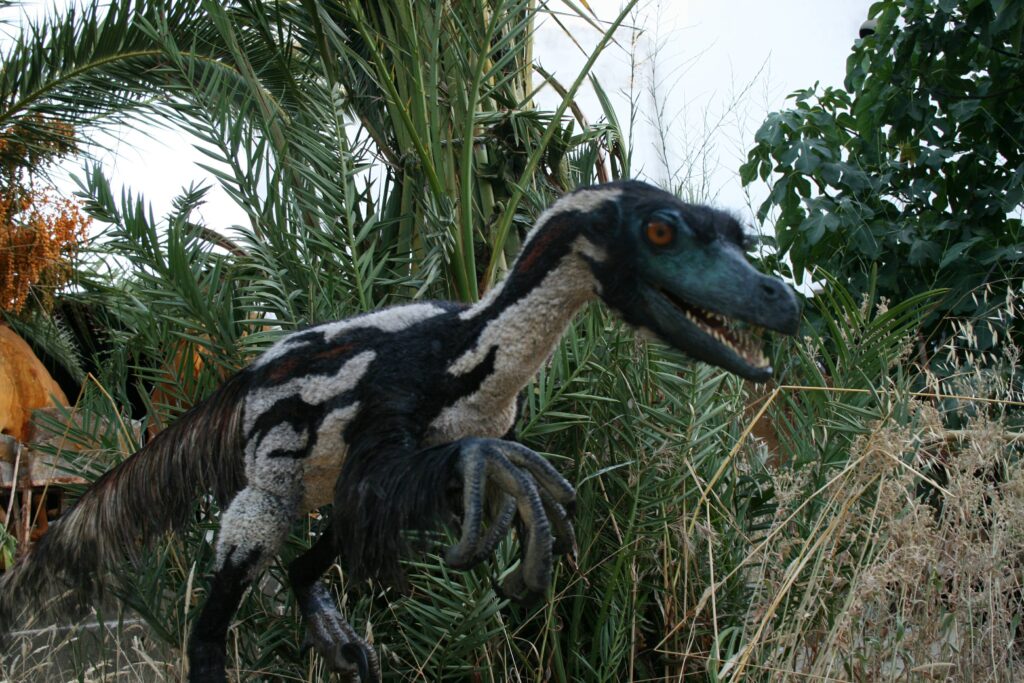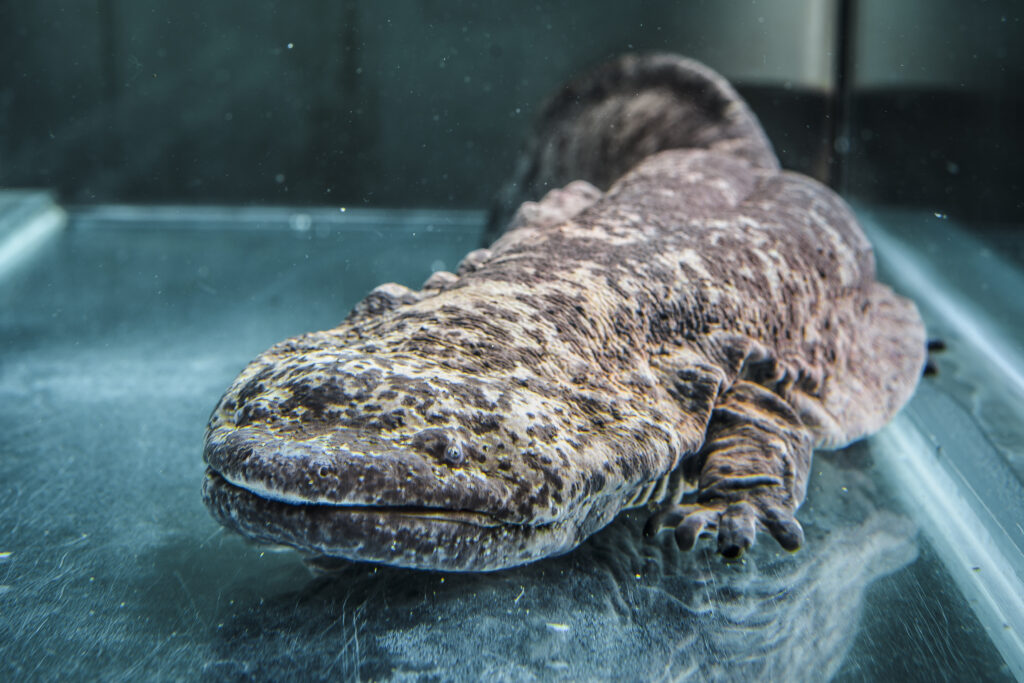The discovery of fossilized dinosaur remains has revolutionized our understanding of Earth’s prehistoric past. Each significant find has added crucial pieces to the paleontological puzzle, sometimes confirming existing theories and other times completely reshaping scientific thought. From accidental discoveries by farmers to meticulously planned excavations, these 15 remarkable fossils have fundamentally altered what we know about dinosaurs and their world. They’ve helped scientists determine how these magnificent creatures lived, died, evolved, and eventually disappeared, leaving an indelible mark on our planet’s history and our scientific understanding.
1. Archaeopteryx: The Missing Link
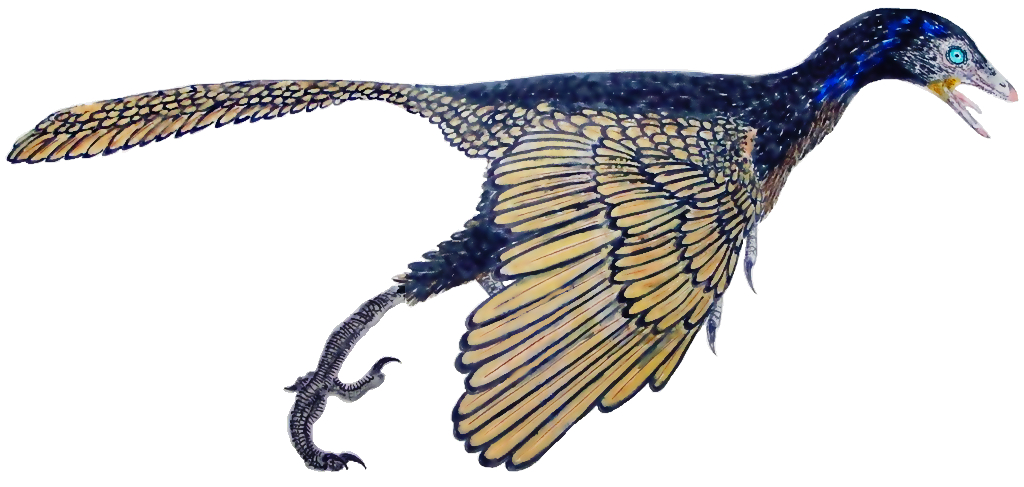
When workers discovered the first Archaeopteryx specimen in a German limestone quarry in 1861, they couldn’t have known it would become one of paleontology’s most important fossils. This crow-sized creature revealed an extraordinary combination of reptilian and avian features, including teeth, a long bony tail, and most significantly, impressions of feathers. The timing of this discovery—just two years after Darwin published “On the Origin of Species”—provided crucial evidence supporting the theory of evolution. Archaeopteryx demonstrated a clear transitional form between dinosaurs and birds, helping to establish the evolutionary connection between these groups. Today, scientists recognize it as a member of the theropod dinosaurs, closely related to the ancestors of modern birds, rather than being a direct ancestor itself.
2. Sue the Tyrannosaurus Rex: Most Complete T. Rex Skeleton

In 1990, fossil hunter Sue Hendrickson noticed some bones protruding from a cliff face in South Dakota, leading to the discovery of the most complete and well-preserved Tyrannosaurus rex skeleton ever found. Named “Sue” after its discoverer, this spectacular specimen is approximately 90% complete with 250 of the estimated 380 bones preserved, including the skull, which measures five feet in length. After a contentious legal battle over ownership, Sue was purchased by Chicago’s Field Museum for $8.4 million—the highest price ever paid for a fossil at that time. The extraordinary completeness of this specimen has allowed scientists to conduct unprecedented studies on T. rex anatomy, growth patterns, and potential injuries and diseases. Sue’s skeleton revealed evidence of numerous injuries and infections that the dinosaur survived, including broken ribs, a damaged shoulder, and leg injuries, providing valuable insights into Tyrannosaurus biology and behavior.
3. Sinosauropteryx: First Dinosaur with Confirmed Feathers

The discovery of Sinosauropteryx in 1996 from China’s Liaoning Province fundamentally changed our image of dinosaurs forever. This small theropod dinosaur was the first non-avian dinosaur specimen found with indisputable evidence of feathery structures, forcing scientists to reconsider the traditional scaly appearance attributed to dinosaurs for generations. The fossilized remains were so exquisitely preserved that they showed a fuzzy covering of primitive feather-like structures called proto-feathers along the back and tail. Using sophisticated imaging techniques, paleontologists were even able to determine the original coloration of these feathers, revealing a ginger-colored body with alternating light and dark bands on the tail. This groundbreaking discovery provided concrete evidence that feathers evolved before flight, likely first serving functions such as insulation or display, rather than aerial locomotion.
4. Maiasaura: Evidence of Parental Care

The discovery of Maiasaura nesting grounds in Montana during the late 1970s revolutionized our understanding of dinosaur behavior and reproductive biology. Paleontologist Jack Horner uncovered multiple nests containing fossilized eggs, hatchlings at different developmental stages, and adult specimens, providing the first definitive evidence of parental care among dinosaurs. The nests were arranged in colonies, suggesting these duck-billed dinosaurs lived in herds and returned to the same nesting sites year after year. Analysis of the leg bones of juvenile specimens indicated they remained in the nest while adults brought food to them, contrary to previous assumptions that all dinosaur young were immediately independent upon hatching. This discovery was so significant that the genus name “Maiasaura” was chosen, meaning “good mother lizard,” reflecting the revolutionary understanding that at least some dinosaurs exhibited complex social behaviors and parental investment similar to many modern birds.
5. Microraptor: The Four-Winged Dinosaur

The 2003 description of exceptionally preserved Microraptor fossils from China’s Liaoning Province presented paleontologists with an entirely unexpected body plan—a dinosaur with four wings. This crow-sized dromaeosaurid possessed long flight feathers not only on its arms but also on its legs, creating a biplane-like configuration that was previously unknown in the fossil record. The discovery of this unusual arrangement prompted new theories about the evolution of flight, suggesting that gliding from trees using four wings might have been an intermediate stage before the development of powered flight using only the forelimbs. Microscopic analysis of Microraptor’s feathers revealed they contained melanosomes (pigment-bearing structures) indicating the creature had iridescent black plumage, similar to modern crows and ravens. This remarkable fossil highlighted the diversity of body plans that evolved among feathered dinosaurs and complicated the previously straightforward models of how flight evolved.
6. Deinonychus: The Catalyst for the “Dinosaur Renaissance”
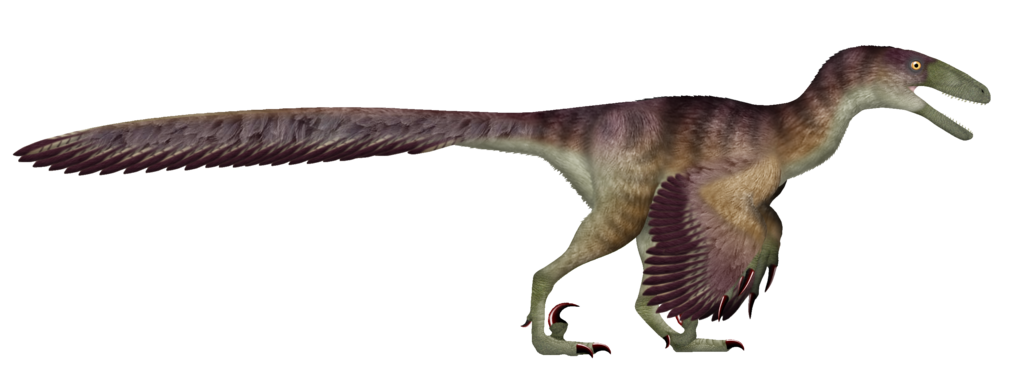
When paleontologist John Ostrom described Deinonychus in 1969, it triggered a fundamental shift in how scientists viewed dinosaurs. This medium-sized predator displayed anatomical features that indicated active, agile behavior rather than the sluggish, reptilian movements previously attributed to dinosaurs. Most notably, Deinonychus possessed a large, sickle-shaped claw on each foot that it likely used to slash at prey, along with bones suggesting powerful musculature and an active metabolism. Ostrom’s detailed anatomical analysis demonstrated striking similarities between Deinonychus and modern birds, reviving the theory that birds evolved from theropod dinosaurs. This revolutionary fossil find initiated what became known as the “Dinosaur Renaissance,” a complete paradigm shift in which dinosaurs began to be viewed as active, possibly warm-blooded animals rather than oversized reptiles. The influence of this discovery extends beyond scientific circles—Deinonychus served as the primary model for the “velociraptors” depicted in the Jurassic Park films.
7. Psittacosaurus: Revealing Dinosaur Colors and Soft Tissues

Discovered in exceptional preservation conditions in China, certain Psittacosaurus specimens have provided unprecedented insights into dinosaur soft tissues and coloration. One particularly remarkable individual, sometimes called the “mummy” specimen, preserved not only the skeleton but also extensive skin impressions, scales, and even the cloaca (the posterior opening that served for excretion and reproduction). Using sophisticated imaging techniques, scientists were able to determine this parrot-beaked dinosaur’s actual coloration pattern, revealing it had countershading—darker on top and lighter underneath—a common camouflage adaptation in modern animals that live in forested environments. The specimen also preserved a series of stiff bristle-like structures projecting from the tail, structures completely unknown before this discovery. Analysis of the skin revealed that Psittacosaurus had uniquely mammal-like melanocytes (pigment cells) in its skin, suggesting that aspects of skin chemistry evolved earlier than previously thought.
8. Spinosaurus: The Aquatic Dinosaur Revelation

The story of Spinosaurus began in 1912 when German paleontologist Ernst Stromer discovered its remains in Egypt, only for the original specimens to be destroyed during World War II bombing. For decades, this massive predator with its sail-like spinal extensions remained poorly understood until new specimens discovered in Morocco between 2008 and 2014 completely transformed our understanding of this creature. These new fossils revealed Spinosaurus had short hind limbs, dense bones for buoyancy control, and a paddle-like tail—all adaptations for an aquatic lifestyle. This evidence established Spinosaurus as the first known semi-aquatic dinosaur, overturning the long-held belief that dinosaurs were exclusively terrestrial animals. The discovery forced paleontologists to reconsider fundamental assumptions about dinosaur ecology and opened the possibility that other dinosaurs might have adapted to aquatic environments in ways not previously considered.
9. Dakota the Hadrosaur: Extraordinary Skin Preservation
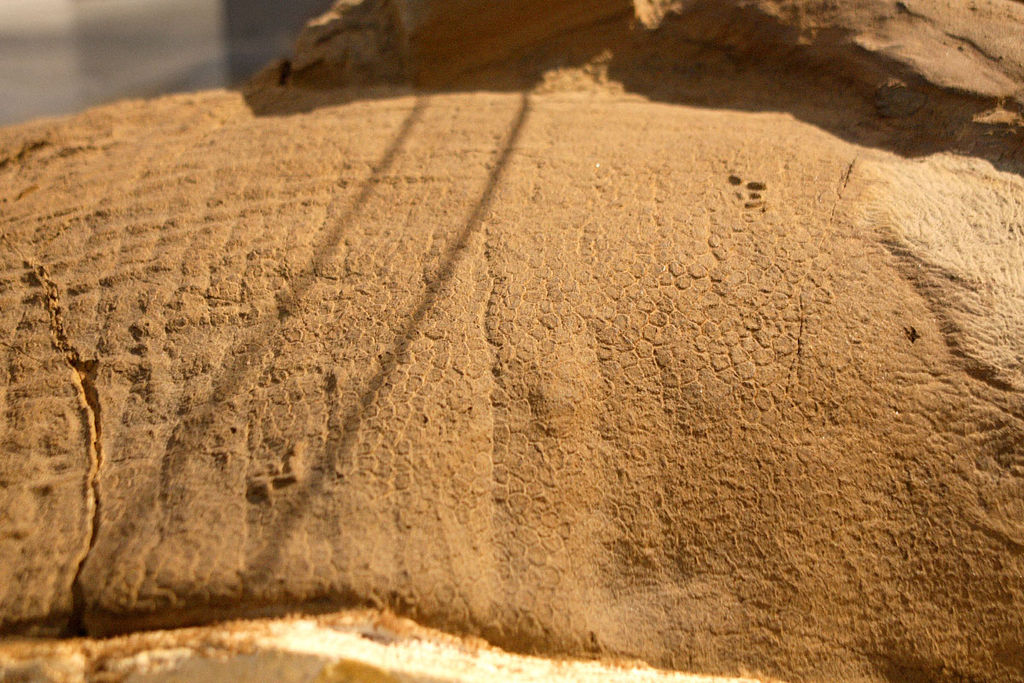
Discovered by teenage fossil hunter Tyler Lyson on his family’s North Dakota property in 1999, “Dakota” represents one of the most extraordinary examples of soft tissue preservation in the fossil record. This Edmontosaurus specimen includes not merely bones but also extensive mineralized skin impressions, muscles, and other soft tissues. Using advanced imaging techniques, including CT scans, scientists were able to visualize the dinosaur’s muscles and determine that its hindquarters were approximately 25% more massive than previously estimated based on skeletal remains alone. The exceptional preservation showed that this duck-billed dinosaur had much thicker skin than modern reptiles, with distinct tubercles (bumps) arranged in patterns across different body regions. This remarkable mummified specimen has forced paleontologists to revise body mass estimates for similar dinosaurs and has provided crucial insights into dinosaur physiology that cannot be obtained from skeletal material alone.
10. Yutyrannus: The Feathered Giant

When Yutyrannus huali was described in 2012 from specimens found in northeastern China, it dramatically expanded our understanding of feathered dinosaurs. At approximately 30 feet long and weighing over a ton, Yutyrannus was the largest known dinosaur with confirmed feathers until that point, demolishing the previous assumption that feathers were limited to smaller dinosaur species. This tyrannosauroid relative possessed long, filamentous feather-like structures across much of its body, which likely served for insulation rather than flight. The discovery was particularly significant because it suggested that even the iconic Tyrannosaurus rex might have had some form of feathery covering, at least during some portion of its life. The presence of extensive feathering on such a large predator also raised intriguing questions about thermoregulation in giant dinosaurs and undermined the previous theory that large dinosaurs would have overheated if insulated with feathers.
11. Kulindadromeus: Feathers Beyond Theropods

The 2014 description of Kulindadromeus from Siberia delivered a stunning revelation to paleontologists worldwide by presenting the first conclusive evidence of feather-like structures in an ornithischian dinosaur. Prior to this discovery, confirmed feathers had been found exclusively in theropod dinosaurs (the group including T. rex and birds). Kulindadromeus, however, belonged to the completely separate ornithischian branch of the dinosaur family tree, which includes animals like Triceratops and Stegosaurus. This small herbivore possessed several types of feather-like structures, including simple filaments, bundles of filaments, and ribbon-shaped appendages. The implications were profound: either feathers evolved independently in different dinosaur lineages, or more likely, primitive feather-like structures were present in the common ancestor of all dinosaurs, suggesting that most or all dinosaurs had the genetic capability to develop feathers or similar integumentary structures.
12. Scipionyx: Preserved Internal Organs
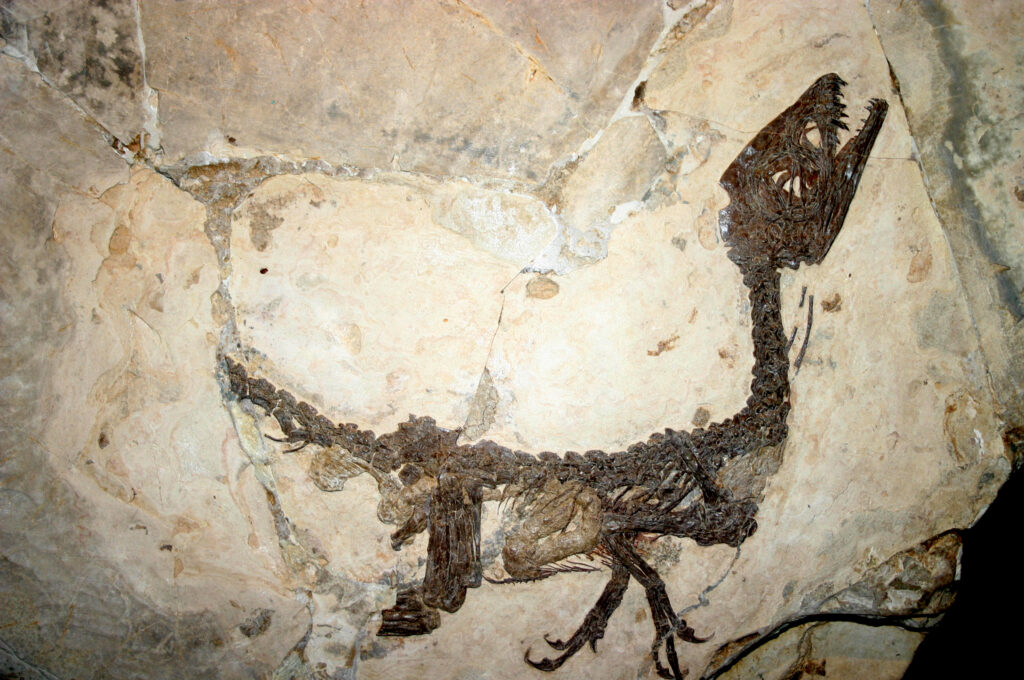
The discovery of a baby dinosaur fossil in southern Italy in 1981 yielded one of the most exceptional preservations of dinosaur soft tissues ever found. Named Scipionyx samniticus and nicknamed “Ciro,” this small theropod dinosaur fossil preserved not only the skeletal elements but also numerous internal organs, including portions of the intestines, liver, muscles, and trachea. The exceptional preservation allowed scientists to identify the position of various organs within the body cavity, providing unprecedented insights into theropod internal anatomy. Analysis of the preserved intestinal tract even revealed the dinosaur’s last meal, with partially digested fish remains visible in the intestines. This remarkable fossil also displayed traces of muscle fibers with their original striation patterns, allowing researchers to reconstruct aspects of muscle attachment and function that are normally impossible to determine from fossilized bones alone.
13. Yi qi: The Dinosaur with Bat-like Wings

The 2015 announcement of Yi qi (pronounced “ee chee”) from China’s Hebei Province introduced the world to one of the strangest dinosaurs ever discovered and a completely unexpected form of dinosaurian flight adaptation. This small theropod possessed elongated fingers supporting a membrane similar to that of bats or flying squirrels, rather than the feather-based wings of birds and their closest dinosaur relatives. Most remarkably, Yi qi had a long, rod-like bone extending from each wrist that helped support this membrane—a structure without parallel in any other known dinosaur or bird. This peculiar anatomical feature suggested the existence of a previously unknown dinosaurian flight experiment, fundamentally different from the feathered-wing approach that eventually led to modern birds. Yi qi demonstrates that dinosaurs evolved a greater diversity of flight-related adaptations than previously imagined, with some lineages exploring flight solutions that ultimately proved evolutionary dead ends.
14. Chicxulub Crater Core Samples: The Dinosaur Extinction Evidence

While not a dinosaur fossil itself, core samples retrieved from Mexico’s Chicxulub crater in 2016 provided crucial evidence concerning the most transformative event in dinosaur history—their extinction. These cores, extracted from the massive impact crater by an international scientific drilling project, contained layers of rock that recorded the immediate aftermath of the asteroid impact that occurred 66 million years ago. The samples revealed that within minutes to hours after impact, more than 425 feet of material was deposited, demonstrating the catastrophic nature of the event. The cores contained melted rock that had solidified, charcoal from global wildfires, and a conspicuous absence of limestone, indicating that the impact vaporized sulfur-rich rocks and injected massive quantities of sulfur into the atmosphere, triggering a devastating period of global cooling. This physical evidence confirmed the rapid, catastrophic nature of the extinction event that eliminated all non-avian dinosaurs after 165 million years of evolutionary success.
15. Nodosaurus: The Best-Preserved Armored Dinosaur

In 2011, a mining operation in Alberta, Canada, uncovered what would become known as the most perfectly preserved armored dinosaur ever found. This Nodosaurus specimen, unveiled to the public in 2017 after years of painstaking preparation, preserved not just the skeleton but also extensive skin, armor plates in their original positions, and even the original coloration patterns of the animal. The preservation was so exceptional that the dinosaur appears almost lifelike, earning it the nickname “Sleeping Beauty” among some paleontologists. The armor plating, comprised of thousands of osteoderms (bony deposits) embedded in the skin, revealed previously unknown patterns and arrangements that would have been impossible to reconstruct from disarticulated remains. Analysis of preserved stomach contents provided direct evidence of this herbivore’s diet, while pigment studies suggested it had reddish-brown camouflage coloration, likely an adaptation to its forested environment during the Cretaceous period.
These remarkable fossil discoveries have transformed our understanding of dinosaurs from lumbering, cold-blooded reptiles to dynamic, diverse creatures whose legacy continues through modern birds. Each finding has added crucial details to the prehistoric narrative, revealing that dinosaurs possessed complex behaviors, sophisticated adaptations, and surprising anatomical features previously unimagined. From feathered giants to four-winged gliders, from devoted parents to semi-aquatic predators, these fossil treasures remind us that paleontology is an ever-evolving science where each new discovery has the potential to rewrite what we thought we knew about Earth’s most magnificent prehistoric inhabitants.

